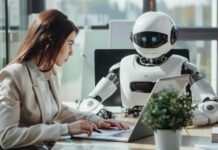The world of work isn’t changing—it’s revolutionizing at warp speed. As AI overhauls job design, shifts in demographics redefine the talent pool, and hybrid models emerge as the standard, HR is no longer a back-office function. It’s a strategic driver of enterprise agility. But too many companies are still stuck on legacy systems and old talent practices. So, what really is it going to take to create a Future-Ready HR workforce in 2025 and beyond?
Table of Contents:
1. HR Moves from Reactive to Strategic
2. Strategic Talent Is the New Competitive Advantage
3. Skills Now Trump Credentials
4. The Rise of Agile, Modular HR Structures
5. Well-being Isn’t a Perk—It’s Infrastructure
6. Inclusion Is the Strategy
7. Predictive People Analytics Powers Better Decisions
Reimagining Leadership from the Inside Out
1. HR Moves from Reactive to Strategic
Historically, HR has been typecast as a support function. But in a landscape where innovation is currency, that role no longer suffices. C-suite executives now expect HR to be a strategic advisor—actively designing talent approaches that drive business results.
In Mercer’s 2024 Global Talent Trends report, 88% of the executives say their companies can’t achieve growth targets without a fundamental overhaul of their workforce model. That starts with HR. To create a Future-Ready HR organization is to infuse strategic thinking into every level of talent development—from recruitment to succession planning.
2. Strategic Talent Is the New Competitive Advantage
In a world where automation is ubiquitous, it’s talent and not the tools that differentiate companies. Strategic talent development by 2025 is no longer an option—a learning function—it’s a business imperative.
HR teams of the future develop high-impact positions for data fluency, AI governance, and human leadership. Positions such as people analytics strategists, employee experience designers, and AI ethics leads are starting to become prevalent in cutting-edge organizations. What most enterprises lack these days is the vision to develop this quality of strategic talent within.
Take Unilever, for instance. In 2023, they scaled their AI fluency program across 80,000 employees, equipping managers with the skills to collaborate with intelligent systems. This isn’t just about upskilling—it’s about transforming the very DNA of the HR workforce.
3. Skills Now Trump Credentials
Traditional hiring models anchored in degrees and years of experience are fast becoming obsolete. As companies strive to build a Future-Ready workforce, they’re pivoting to skills-first hiring and development.
McKinsey predicts that by 2025, 50% of all employees will need reskilling due to automation. The focus now shifts to adaptive capabilities—critical thinking, cross-functional collaboration, and emotional intelligence—over technical credentials alone. Strategic talent development programs must evolve to foster these competencies through internal mobility platforms, microlearning paths, and AI-driven performance tracking.
4. The Rise of Agile, Modular HR Structures
The gig economy, previously a marginal idea, is now redefining fundamental business strategy. Organizations are increasingly embracing agile HR workforce models that combine full-time, part-time, and contract talent to remain agile and responsive.
However, integrating gig workers into the broader talent ecosystem requires a rethink of HR systems. Future-Ready HR leaders design scalable onboarding, benefits frameworks, and continuous engagement loops that ensure contingent workers contribute to long-term goals. Strategic development now includes freelancers—not just permanent staff.
5. Well-being Isn’t a Perk—It’s Infrastructure
A Future-Ready workforce is resilient, not just productive. Mental health, psychological safety, and burnout prevention are now central to HR workforce talent development.
In 2024, Microsoft reported a 40% increase in productivity among teams that embedded well-being metrics into their performance reviews. Future-Ready HR teams implement well-being as infrastructure—building it into job design, leadership KPIs, and digital workflows. Strategic talent development must now be as much about human sustainability as it is about business outcomes.
6. Inclusion Is the Strategy
Diversity, equity, and inclusion (DEI) are no longer HR programs—they’re organizational strategies. Leaders today are under pressure to prove that their Future-Ready HR workforce is equipped to drive inclusive innovation.
With regulatory frameworks tightening and employee activism rising, inclusive hiring algorithms, equitable pay frameworks, and culturally intelligent training programs are key pillars of strategic talent development. DEI is not a soft metric—it’s a growth driver.
7. Predictive People Analytics Powers Better Decisions
HR decisions must move beyond instinct and intuition. The Future-Ready HR workforce leverages predictive people analytics to drive everything from hiring to succession planning.
Advanced organizations now use AI to predict turnover risks, measure leadership effectiveness, and model workforce scenarios. But with great data comes great responsibility. The ethical use of people’s data is a defining challenge for 2025. Strategic development isn’t just about building data skills—it’s about building data integrity.
Reimagining Leadership from the Inside Out
Leadership in 2025 requires far more than operational excellence. The best leaders are adaptive, digitally literate, and emotionally intelligent. To build a Future-Ready HR function, organizations must future-proof their own leadership pipeline.
That means redesigning talent development to support cross-domain mobility, AI collaboration, and a continuous feedback culture. Strategic development must begin with HR leaders themselves—only then can they champion transformation across the enterprise.
The question is no longer if we need to future-proof HR—but how fast can we do it. Building a Future-Ready HR workforce through strategic talent development isn’t a choice—it’s a survival strategy.
Organizations that act now will not only weather uncertainty but shape the future of work itself. The time for incremental change has passed. It’s time for strategic reinvention.
Explore Hrtech Articles for the latest Tech Trends in Human Resources Technology












